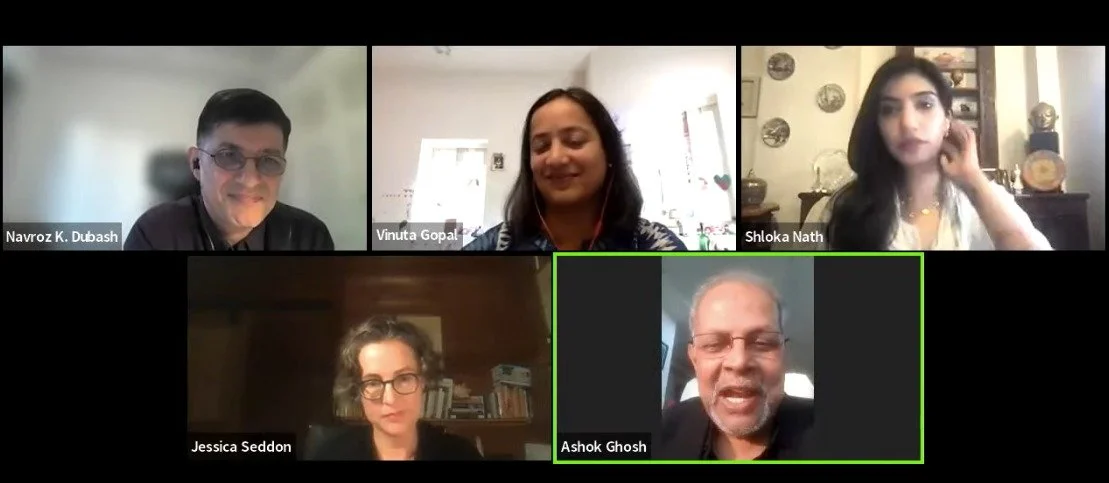Bad air: Ad hocism won’t work anymore
It’s December in Delhi, and as the city is blanketed by a brown soup of air pollution again, a familiar storyline is playing out. This year, too, focus on the issue picked up just in time for Diwali, reaching a crescendo during the stubble-burning season. Arguments rage on which source contributes how much to the ever-worsening air quality. Questions are raised about whether air pollution could be harmful, even cause death, with the Union government responding that there is too little evidence on the health impacts of air pollution.
Persuaded by the visibly deteriorating air quality, the Supreme Court holds frequent hearings on pending cases on air pollution and directs immediate action by state governments of the region. Unfortunately, state governments, apart from engaging in the predictable blame game, introduce emergency measures a few weeks too late and launch a range of ad hoc, untested, and predominantly technical fixes. All this while Delhi residents, and much of the Indo-Gangetic plain, continue to breathe air orders of magnitude worse than what is acceptable.
This story plays out year after year because our attention is focussed on this environmental and health emergency for far too short a period, and when it is, we miss the wood for the trees. A significant amount of time is wasted trying to answer questions that nobody asked, or science has already resolved for us. This was evident in Parliament on November 29, where in response to a parliamentarian’s question, the environment ministry stated in the Lok Sabha that “there is no conclusive data available to establish a direct correlation of death/disease exclusively due to air pollution”.
Leaving aside the fact that such stringent conditions of causality would exclude smoking or HIV/AIDS as potential causes of death, no epidemiologist would argue that air pollution is an “exclusive” cause of death or disease. But decades of research in India and globally have shown conclusively that air pollution creates new vulnerabilities and exacerbates existing ones, leading to illness and premature death (over a million each year in India).
There is, of course, no more significant symbol of ineffective ad hoc pollution control measures than the smog towers erected in Delhi. There is no scientific evidence that proves such towers to be effective anywhere, let alone in one of the most polluted cities in the world. The Delhi government’s analysis has shown that the crores spent on the smog tower at Connaught Place have yielded little in the way of improvements in air quality. Yet, more will be erected in other cities.
Similarly, the Union and state governments have invested thousands of crores over the last few years in purchasing and distributing happy seeders, developing bio-decomposers, and converting stubble to ethanol among a raft of other technical solutions to stubble-burning. And yet, burning stubble remains the most economically viable option for farmers to clear their fields between the growing seasons. Unfortunately, myopic policymaking has meant we continue to procrastinate on difficult policy decisions, most critical among them being moves towards crop diversification and extending the coverage of minimum support prices.
Air pollution is a complex societal problem caused by aspects of policy related to India’s energy mix, poverty-reduction goals, agricultural productivity, transportation choices, urban planning, and many others. We must recognise this and focus on long-term policy pathways with clear goals and time lines. Regrettably, our approach is centred in the “here and now”, where instead of decisively moving towards emissions reductions at source from the big four (industry; transport; biomass and waste burning; and dust), we focus much of our energy on implementing emergency action plans once the air quality has already reached severe levels.
While the National Clean Air Programme and the 15th Finance Commission grants to urban local bodies are a modest start, the lack of technical capacity within the implementing agencies and the time needed to ramp up action mean we are unlikely to see progress in the short term. More importantly, focusing on urban centres ignores the vast swathe of rural India that experiences air quality as bad if not worse as pollution sources exist both within and outside the household.
This is a nationwide, all-year-round problem. So the government needs to plan strategically for the long term, with clearly defined metrics for success, including interim and final targets. This process needs to be guided by a multi-disciplinary team of experts and be responsive to calls for public consultation and accountability. We can no longer afford to spend inordinate amounts of time engaging with ineffective and ill-planned techno-fixes, responding to red herrings, and focusing on Delhi to the detriment of the rest of the country.
Originally published in Hindustan Times on December 23, 2021.
Environmentality is a collection of ideas, perspectives, and commentary by researchers at the Initiative on Climate, Energy and Environment, Centre for Policy Research, New Delhi. Views and opinions expressed in this blog are solely those of the authors. They do not represent institutional views.










ETS is gaining traction as a market-based instrument to reduce industrial emissions. However, questions around transparency, reproducibility, state capacity, and policy design and clarity threaten the viability of this approach in the Indian context.